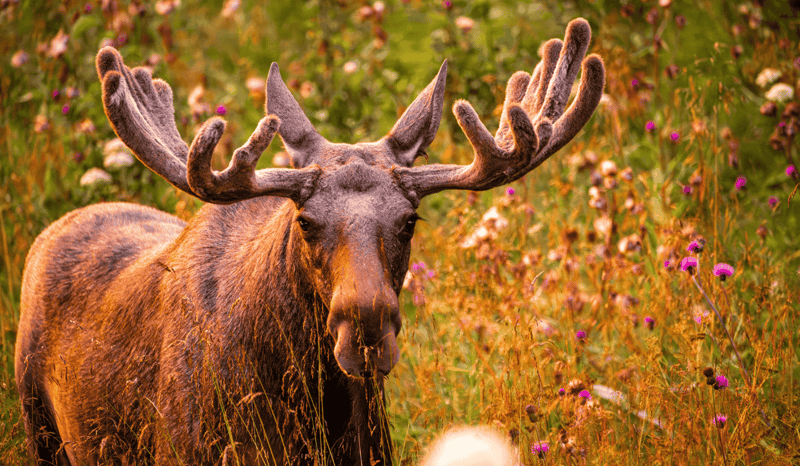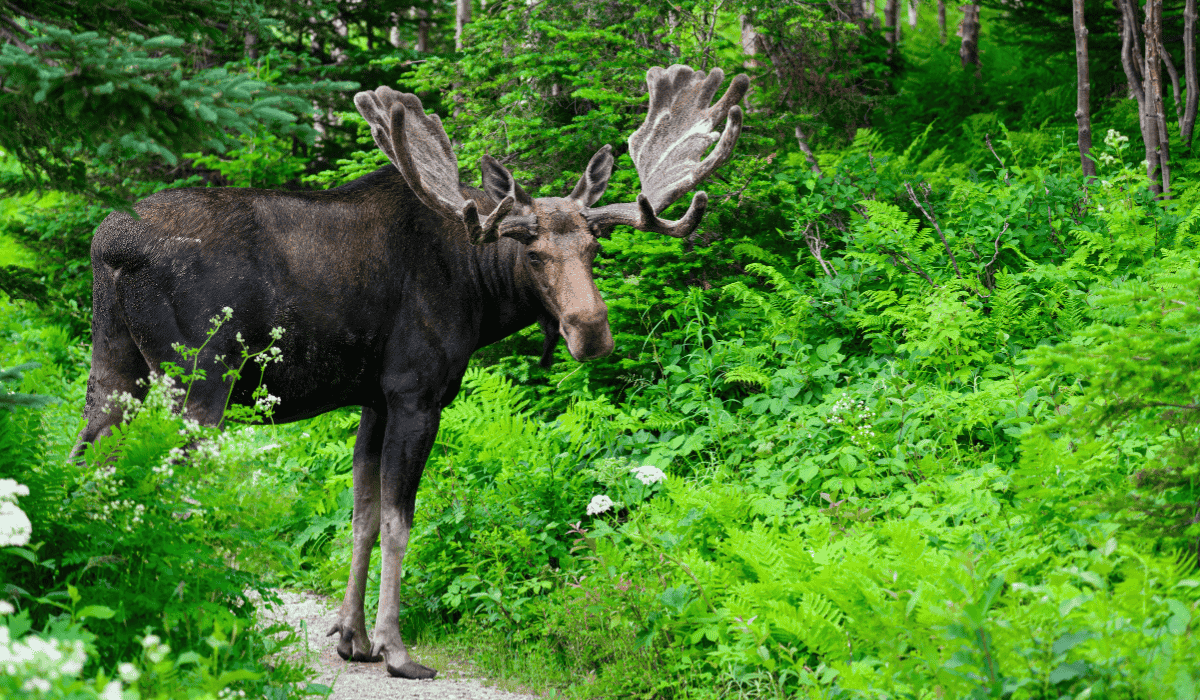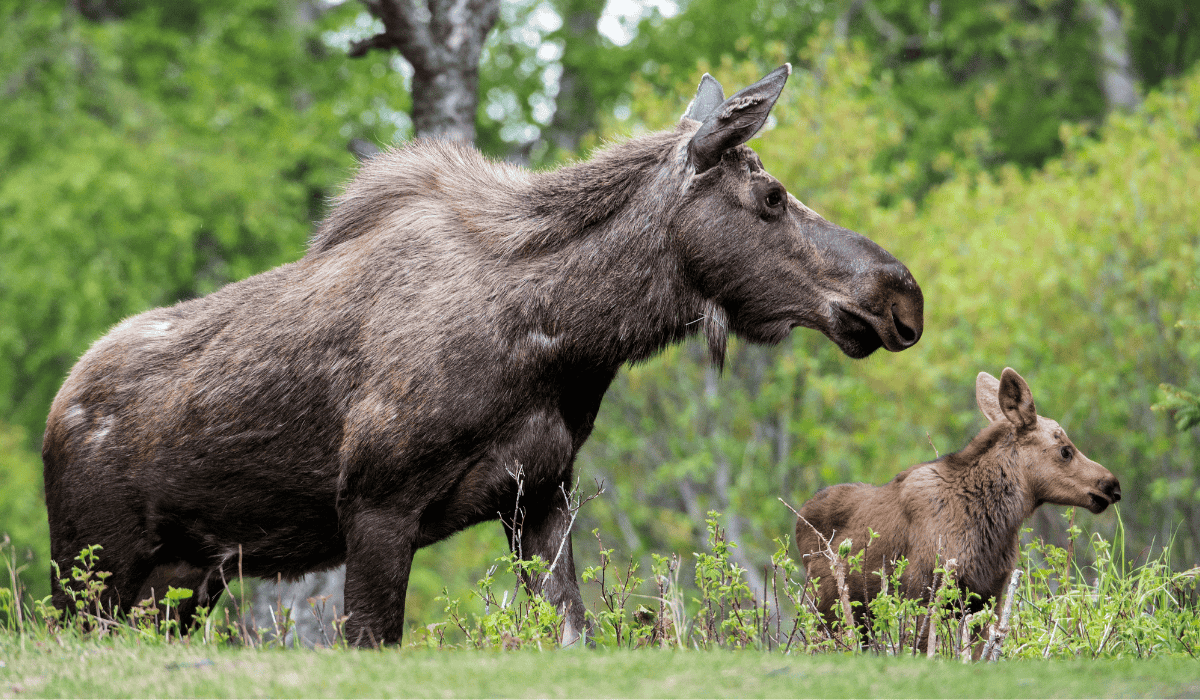
Discover 11 fascinating moose facts about these powerful animals, from their massive size to unique behaviors.
If you’re looking to learn more about wildlife, moose are one of the most fascinating animals to explore. These powerful and solitary creatures are full of surprises, from their massive size to their impressive swimming skills.
We’ve gathered 11 essential moose facts that will deepen your understanding of these iconic forest inhabitants, highlight their role in ecosystems, and show why protecting their habitats is so important.
1. Moose Are the Largest Members of the Deer Family

Moose are true giants. Adult males, called bulls, can weigh up to 1,500 pounds, while females, or cows, are slightly smaller. Their height at the shoulder can reach 6 to 7 feet—taller than most humans! This impressive size helps moose navigate deep snow and dense forests in their native habitats.
2. They Have Distinctive, Palmate Antlers
Only male moose grow antlers, which are wide and flat, resembling the shape of a hand with outstretched fingers (known as “palmate”). Moose shed their antlers every winter and regrow them each spring. These antlers aren’t just for show—they’re used during mating season to compete for mates.
3. Moose Can Swim Like Pros
Moose are excellent swimmers and can swim up to 6 miles per hour for long distances. They often enter water to feed on aquatic plants, cool off in summer, or escape predators. Moose even dive underwater to reach plants up to 20 feet below the surface.
4. They Eat a Surprisingly Varied Diet
Moose are herbivores with a taste for leaves, bark, twigs, and aquatic vegetation. In summer, they graze on shrubs and aquatic plants, while in winter, they rely on woody plants like willow and birch. Despite their size, moose need to eat a lot—sometimes up to 70 pounds of food per day!
5. Calves Are Born in Spring

Moose give birth to one or two calves, usually in May or June. Newborn calves are able to stand within hours and start feeding on their mother’s milk. The first few months are crucial for calf survival, as they are vulnerable to predators.
6. Moose Have a Unique Way of Communicating
Moose communicate through vocalizations, body language, and scent marking. Bulls use loud calls during the rutting season to attract females and warn off rivals, while calves can make high-pitched sounds to call for their mothers.
7. Their Long Legs Help Them Survive Harsh Conditions
Moose legs are long and powerful, allowing them to move through deep snow in winter and wade through marshes and streams. This adaptability helps them survive in a variety of challenging habitats, from boreal forests to tundra regions.
8. Moose Are Solitary Animals
Unlike deer or elk, moose are generally solitary creatures. They usually come together only during the mating season. This solitary nature makes them harder to spot in the wild, but it also helps reduce competition for food.
9. Goose to Geese Is Not Moose to “Meese”
Here’s a quirky one: while the plural of “goose” is “geese,” the plural of “moose” is… still moose! No tricky language rules here—just one of the many unique quirks of this incredible animal.
10. They Face Threats from Habitat Loss and Climate Change
Moose populations are declining in some areas due to habitat loss, rising temperatures, and increasing ticks and parasites that weaken them. Protecting forests, wetlands, and migration corridors is critical for their survival.
11. Seeing a Moose in the Wild Is a Rare and Special Experience

Observing a moose in its natural habitat is awe-inspiring. These massive, powerful animals are a reminder of the beauty and complexity of nature. By learning moose facts and supporting wildlife conservation, we can help ensure future generations get to experience these incredible animals, too.
Why Protecting Moose Matters
Moose aren’t just big, impressive animals—they’re important indicators of ecosystem health. By safeguarding their habitats and reducing human impacts like deforestation and climate change, we protect moose and countless other species that share their environment.
Looking to learn more about animals? Check out World Animal Protection’s Education Center for more animal facts!